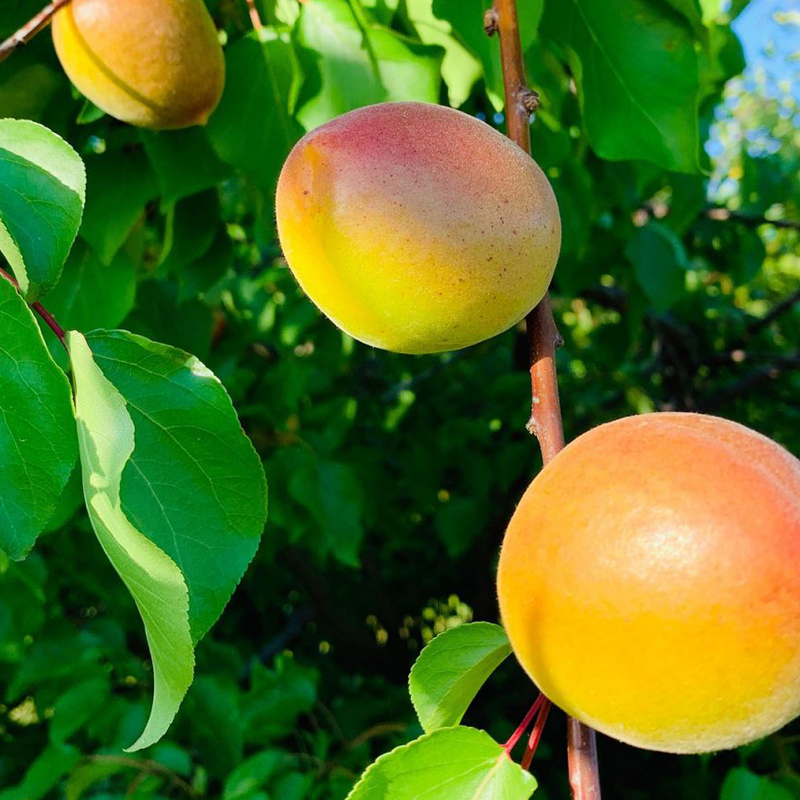Stone Fruit Growing Guide

Quick facts
- Stone fruit trees need full sun to produce the most fruit.
- Space trees 12 to 20 feet apart.
- Plant two different, compatible varieties to ensure fruit.
- Prune annually to maintain tree shape and a healthy, open canopy.
- Expect to get fruit 2 to 5 years after planting if you plant a 1 or 2 year old tree.
Caring for stone fruit trees through the seasons
March— For existing trees, prune before growth begins, after coldest weather has passed
April, May— If last year's growth was less than 12 inches, apply compost around the base of tree
April, May— Plant bare root trees as soon as the soil can be worked
May, June— Plant potted trees after threat of frost has passed
May through October— Water trees as you would any other tree in your yard, particularly during dry spells
June, July— Cut to the ground any root suckers near the tree; they look like stout seedlings and have similar leaves to the tree
June through August—Place netting over trees as fruit ripens to prevent bird damage
June through August— Harvest
October, November— Rake and compost fallen leaves and fruit
October, November— Apply tree wrap in late fall to prevent winter injury
November through March— Watch for deer and vole damage; put fencing around tree if needed
Planting and caring for young trees
Learn how to choose a location, prepare for planting and space trees.
When planting multiple stone fruit trees, assume that the spread will be at least as great as the height. In other words, two trees with a mature height of 15-20 feet will need to be spaced at least 20 feet apart at planting.
Find a sunny location
Choose the sunniest site available for planting, in a spot protected from harsh winds. Stone fruit trees require at least a half day of sun to produce fruit. The more sun they get, the more fruit they can produce.
Avoid planting stone fruit plants too close to the south side of buildings. Heat can get trapped there on sunny spring days and that will encourage trees to bloom too early.
Do not plant stone fruit trees where water stands after rain.
Dig a hole
At planting time, dig a hole large enough to fit the roots without bending them. Bent roots are less likely to spread normally as they grow, causing anchorage problems and susceptibility to drought.
If one root is very long it may be trimmed, but in general do not prune the roots.
Remove plants from pots
If the plant is root-bound or if larger roots circle the inside of the pot, make several vertical cuts through the roots with a sharp knife and spread them out. This will not harm the plant, rather it will encourage the roots to extend and grow out into the soil.
Do not fertilize the soil
Do not add fertilizer nor heavily amend the soil from the hole at planting time as this can create a 'flower pot' effect, where the roots never leave the amended soil. When this happens, plants become root-bound with poor anchorage and low drought resistance.
You may mix in compost or dampened, shredded peat moss to the soil, but make sure at least half the resulting mixture is original soil.
Protecting trees in winter
Stone fruit trees are susceptible to trunk cracking in winter, especially when the trees are young. Often this is caused by fluctuating temperatures as the winter sun warms the bark on very cold days.
To prevent cracking
- Wrap the trunk with a paper or plastic trunk protector in late fall.
- The wrap should extend from the ground to just beyond the first scaffold branch base.
- The wrap can be removed when temperatures warm in spring.





